Today we’re going to talk about how sound diffusers work. We get a lot of questions about diffusion. It’s one of the four main room distortions that we always discuss and people that experience diffusion for the first time are just completely blown away by it. Let’s define what is a sound diffuser and look at the real definition of sound diffusers. This blog has been updated from its original posting to reflect current changes in the science, updated on 12/1/19.
Their musical experience is changed forever and so we’re going to be doing a whole series of videos shortly with Bruce Hallberg, one of our customers who’s made a big commitment to diffusion and we’re going to talk about his discoveries in sound. He calls me every night and tells me how much it’s changed. So it’s going to be an interesting video. We will look at what is a sound diffuser and information about how sound diffusers work.
Sound Diffusers: https://www.acousticfields.com/product-category/sound-diffusion/qd-series/
How Sound Diffusers Work
There’s a lot of devices on the market place, in the marketplace, that call themselves diffusers, I even saw some foam the other day that said it was a diffuser. Just simply not true. These are marketing names given to products that don’t relate to the function of the product. In some cases, it’s not even close. Those of us in the business, understand how diffusion works and a quadratic diffuser is a true diffuser. We’ve all seen these quadratic diffusers around. Maybe you’re not quite sure how they work or quite understand the function so we’ll talk about that today.
Sound Diffuser: https://en.wikipedia.org/wiki/Diffusion_(acoustics)
A Quadratic Diffuser is based on prime numbers; 7, 9, 11, 13, 17,19. These are all examples of prime numbers. It’s a formula that you plug in a constant and work through to the end and get residuals. It’s a little bit too complicated for today so let’s just talk about quadratic for now, because it’s the real true diffusion. It’s the one we use because it’s predictable and it’s consistent and it’s available in two dimensions. You have vertical and horizontal so you can get two dimensions of diffusion in your room.
How Does it Work?
Let’s talk about that. It’s a series of wells or troughs with horizontal dividers in them. We’ve all seen examples of these. This is a prime 7 right here. It’s based on prime 7 as we discussed. It has actually more than six. We took out the end wells because they’re not really necessary. They’re not audible, just a flat surface for a reflection anyway. So our first well depth starts at 1 inch. The next well depth is four. The middle two are two inches, four and one. So the series kind of repeats itself. It runs one way in the beginning and then repeats itself at the end.
The above numbers were derived by using that formula that we talked about and getting residuals, which we’ll discuss in another video/blog post, that’s more math-related. Each one of the well depths is based on the quarter wavelength rule and, again we’ll talk about the quarter wavelength rule in another video. So each one of these well depths is based on the quarter wavelength rule. The distance across or horizontal dimension is half wavelength. So let’s just stick with the vertical ones for right now and look at the quarter-wave rule.
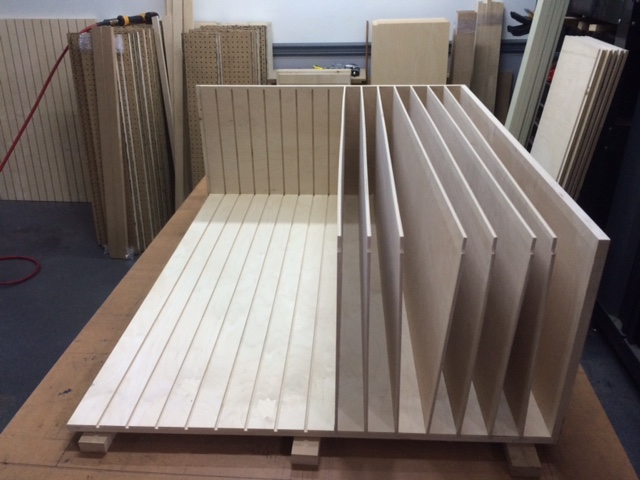
Quadratic Diffuser Interior Vertical Wells
So our first well is one inch, times four, because its 25 percent remember, quarter wavelength. So that gives us a total wavelength of four inches. We want to find what frequency that the 1″ represents. Running the numbers we see that this represents around 3,400 Hz. The speed of sound is 1,132 feet per second, so we have to change our inches to feet. It’s a third of a foot so about 3400 cycles. So this one-inch depth is standard on quadratic diffusers for the end wells and therefore our quadratic diffuser really will have an upper limit of around thirty-four hundred cycles. Now we’ll go the other way, we can always go lower or we can go down to even 100 cycles. The wells obviously get very deep, you can have a prime 43 diffuser with a 41-inch well depth.
You can have a lot of distance and a lot of space that these devices can take up. This particular one obviously is about four and a half inches deep. So that’s our top frequency and then we get the same calculations here, running for these. In the above image, I went ahead and ran the calculations for you. 3,385 as we work through our first example on the end wells. The next well at four inches 847. 1,691 for the middle and then 847 repeating this sequence. So what’s our bottom? Our bottom is 847, and our top is 3,385. So that’s the frequency response of the diffuser. Predictable, consistent so you know what you’re working with. So obviously frequencies that are all higher than this will be defused also. This is kind of our upper limit for each well. So keep that in mind as you’re working through this so we have a curve that starts at 847 for diffusion and it ends at 3,385.
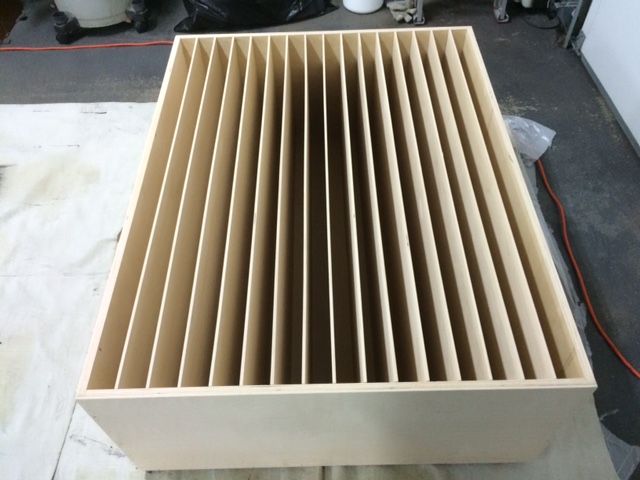
Quadratic Diffuser
What is That Range Right There?
Well, that’s right in our middle range. It’s actually the high middle range. So very important. It adds a lot of space, a lot of dimensions to your presentation. The following picture shows our prime 7 based quadratic diffuser that we were just discussing. You can see a series of wells. The first well is one inch and then our second one is the deep one which is the four-inch. The middle two are two-inch, repeating the sequence again at four and one. So this is what a quadratic diffuser looks like.
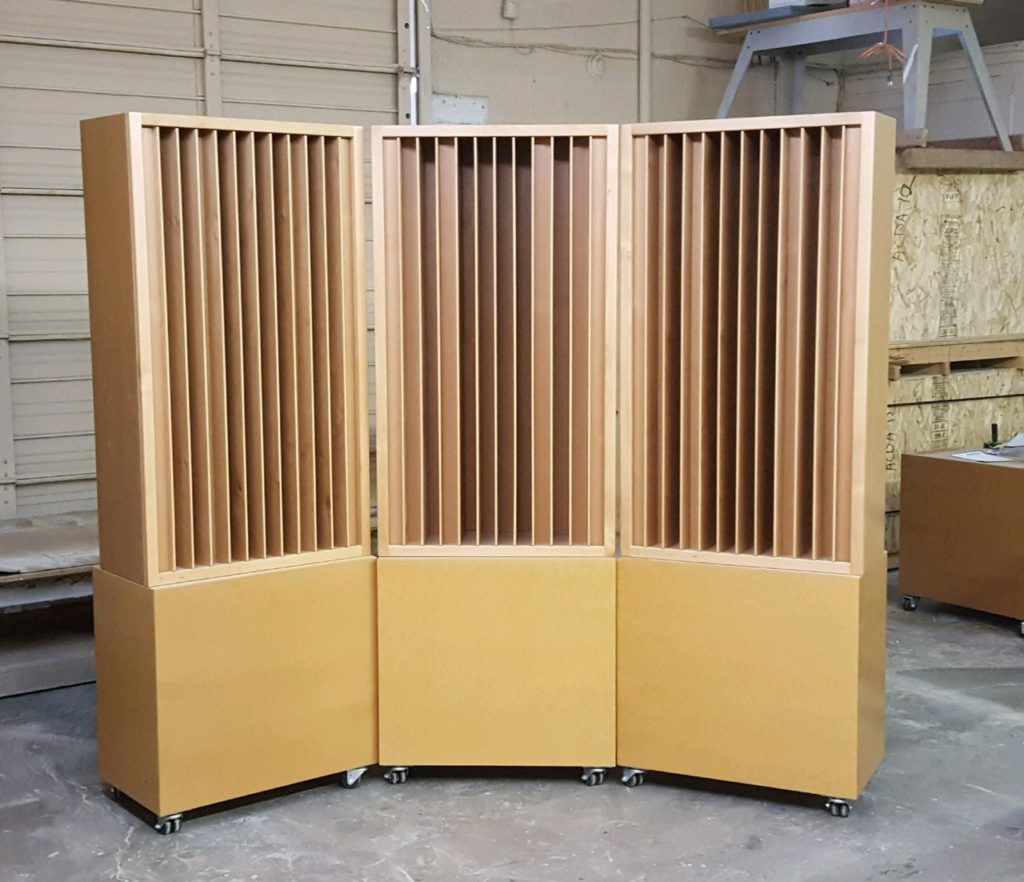
Acoustic Fields Quadratic Diffusers Positioned Vertically
When you position them vertically, like in the above photo, in a room, you get a horizontal diffusion. Sound energy enters the diffuser and then spreads out in a fan-like array, a 180-degree array. So it doesn’t reduce any amplitude, it doesn’t take any energy away from the signal, and it doesn’t change the time signature. It just takes that reflection and spreads it out in a nice 180-degree array. It’s amazing what that sounds like. If you’ve never heard it, you really should. If you change the diffuser’s orientation and you put it horizontally, then you defuse vertically. So there’s an inverse relationship between the position of the product and the performance. So horizontally we get a vertical diffusion.
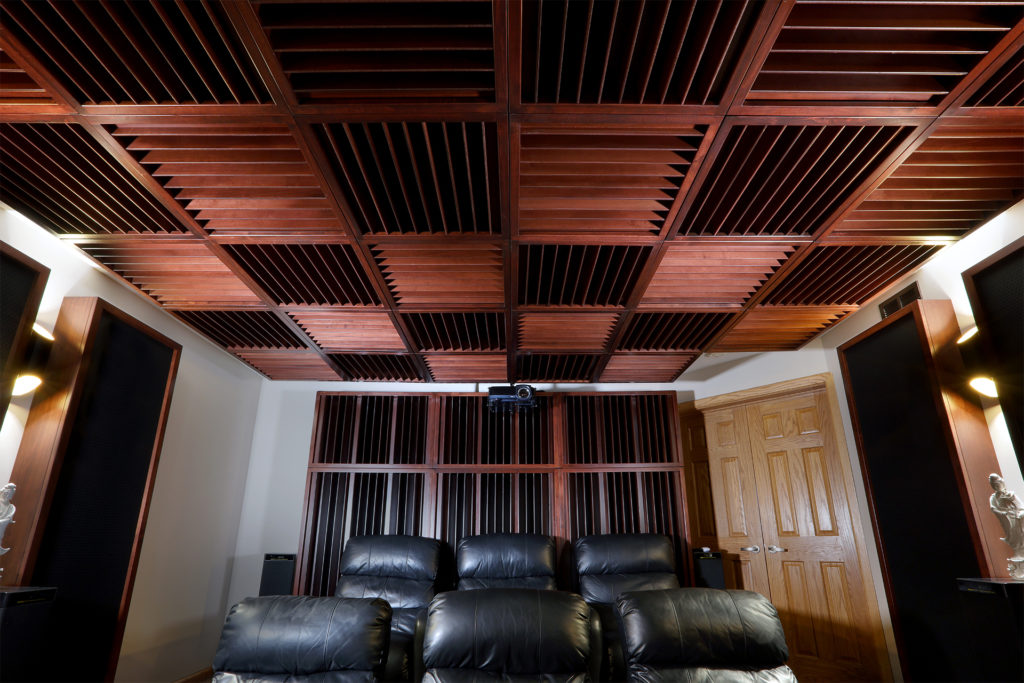
Ceiling Diffusers in Studio
Two Dimensions Of Sound
With vertical and horizontal you get two dimensions of a possible three within your room. So a very, very important tool; predictable and consistent. Those are the two words I like to use for it and if you’ve never heard a room with diffusion, especially quadratic, you’ve just got too, I mean you’re just missing out on such an important part of your musical presentation in small rooms. It can, if well done and positioned correctly, take a small room and make it sound two to three times larger.
In Summary
I hope you enjoyed today’s video and blog post on how sound diffusers work. If you did please give me a thumbs up or social share so I know that it had value to you, and please, if you have any questions leave them in the comments section and I’ll be more than happy to answer them for you.
Alternatively if there are other topics that you wish to discuss or see discussed in a video presentation, send me an email info@acousticfields.com and we’ll get them on our list and get it done for you. I release a new video about every week so stay tuned to our YouTube channel and keep updated on our new videos.
And if you would like to learn more about room acoustics please sign up for my free videos and ebook by joining the mailing list here. I send room tuning tips and things for you to test in your room every Wednesday. They are easy to follow and really help you enjoy more of your music.
Thanks
Dennis


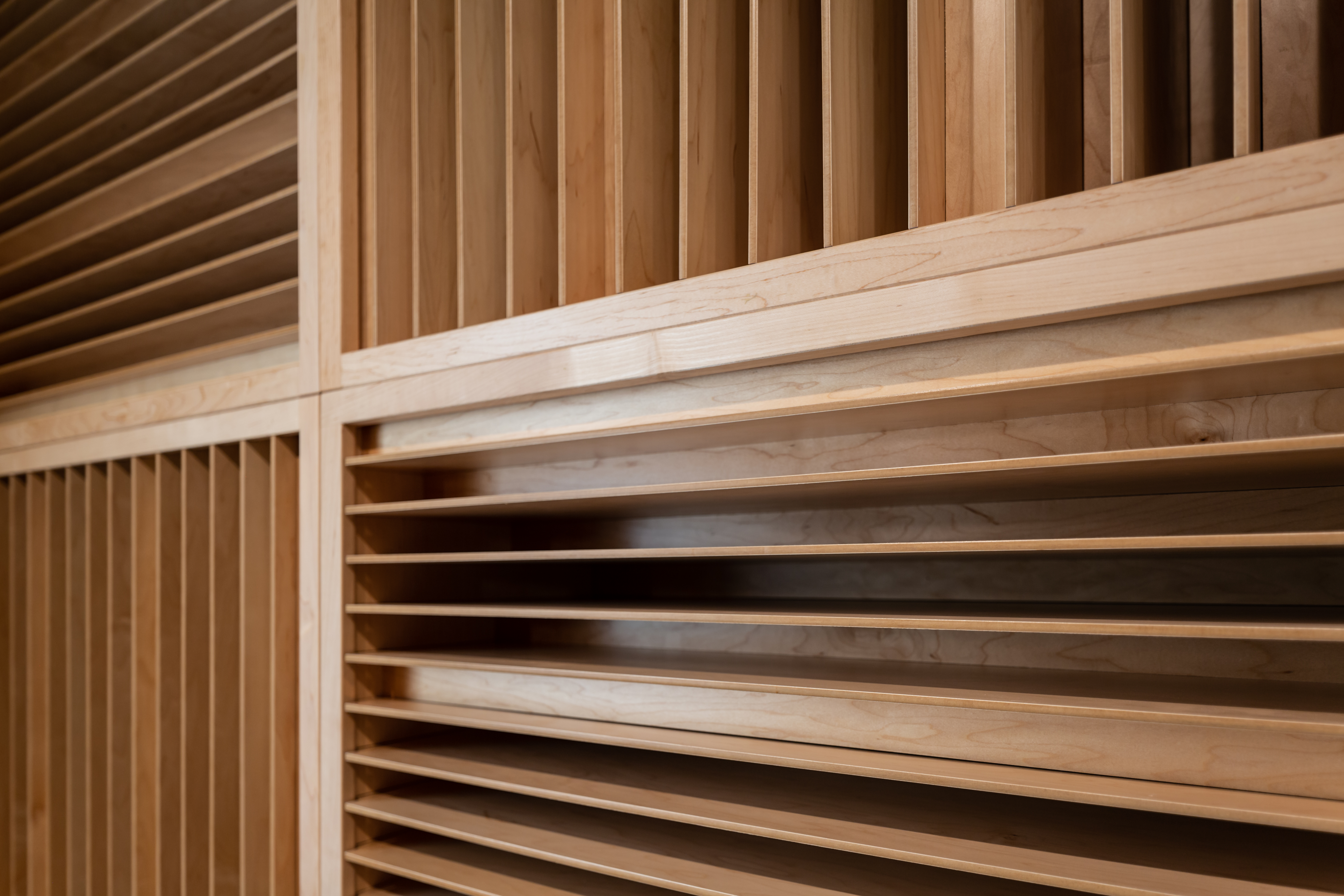
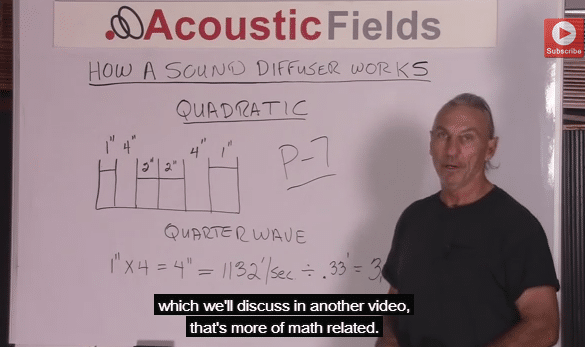
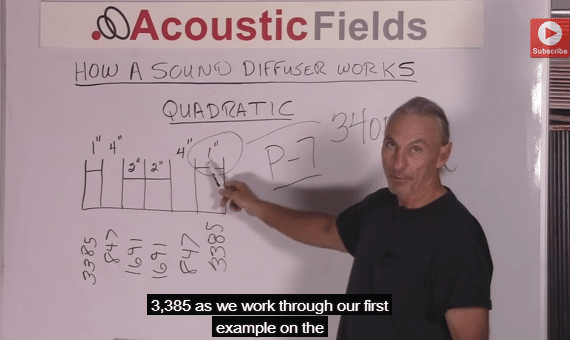





very informative